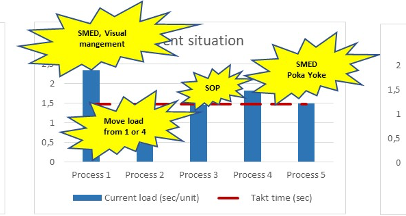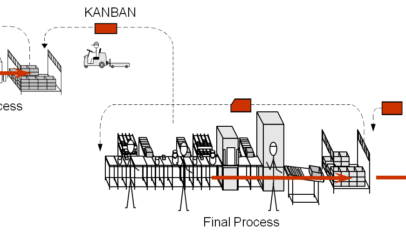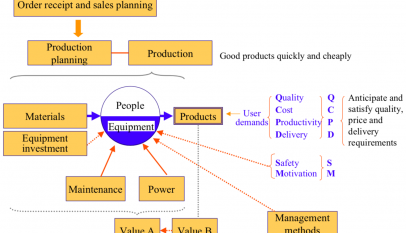Understanding and optimizing product performance metrics is crucial for any business aiming for growth and success. These metrics provide valuable insights into customer behavior, product effectiveness, and overall business health. Let’s explore some essential product performance metrics and how to calculate them with real-world examples.
1. Conversion Rate: The conversion rate measures the percentage of visitors who take a desired action, such as making a purchase. Example: If 100 people visit your website and 20 make a purchase, the conversion rate is 20%.
2. Customer Lifetime Value (CLV): CLV estimates the net profit from the entire future relationship with a customer. Example: If a customer spends $50 monthly and stays for 3 years, the CLV is $1,800.
3. Customer Satisfaction (CSAT): CSAT gauges how satisfied customers are with a product or service. Example: If 100 customers rate their satisfaction as 4.5 out of 5, the CSAT score is 90%.
4. Net Promoter Score (NPS): NPS measures customer loyalty and their likelihood to recommend the product to others. Example: If the average rating is 8 out of 10, the NPS is 80%.
5. Retention Rate: This metric shows the percentage of customers who continue using a product over time. Example: If 80 out of 100 customers continue using the product after one month, the retention rate is 80%.
6. Average Revenue Per User (ARPU): ARPU calculates the average revenue generated from each user. Example: If 100 customers generate $10,000, the ARPU is $100.
7. Funnel Analysis: Funnel analysis tracks customers through different stages of the sales process to identify drop-off points. Example: If 100 visitors move from awareness to purchase, and 20 complete the purchase, the conversion rate through each stage can be analyzed.
8. User Engagement: This metric measures how actively users interact with a product. Example: If 50 out of 100 users engage with the website by clicking links or viewing content, the engagement rate is 50%.
9. Bounce Rate: Bounce rate indicates the percentage of visitors who leave after viewing only one page. Example: If 20 out of 100 visitors leave after one page, the bounce rate is 20%.
10. Time on Site: Time on site measures the average duration visitors spend on a website. Example: If 100 visitors spend a total of 1,000 minutes, the average time on site is 10 minutes.
11. Acquisition Cost: This metric calculates the cost of acquiring a new customer. Example: If $1,000 is spent on marketing to acquire 100 customers, the acquisition cost is $10 per customer.
12. Churn Rate: Churn rate shows the percentage of customers who stop using a product over time. Example: If 20 out of 100 customers leave after one month, the churn rate is 20%.
13. Repeat Purchase Rate: This metric measures the percentage of customers who make repeat purchases. Example: If 40 out of 100 customers make another purchase, the repeat purchase rate is 40%.
14. Gross Merchandise Value (GMV): GMV represents the total value of products sold through a platform. Example: If 100 products are sold at $10 each, the GMV is $1,000.
15. Cart Abandonment Rate: This rate measures how many shoppers add items to their cart but do not complete the purchase. Example: If 20 out of 100 shoppers abandon their cart, the abandonment rate is 20%.
16. Customer Acquisition Cost (CAC): CAC is the cost associated with acquiring a new customer. Example: If $1,000 is spent to gain 100 customers, the CAC is $10 per customer.
17. Gross Profit Margin: This metric shows the revenue from sales minus the cost of goods sold. Example: If revenue is $100 and the cost is $60, the gross profit margin is 40%.
18. Return on Investment (ROI): ROI measures the profitability of an investment. Example: If $1,000 investment generates $2,000 in revenue, the ROI is 100%.
19. Product Usage Frequency: This metric tracks how often a product is used over time. Example: If 100 customers use a product 100 times, the usage frequency is 10,000.
20. Feature Usage Rate: Feature usage rate measures how many users utilize a specific feature. Example: If 80 out of 100 users use a feature, the usage rate is 80%.
21. Engagement Rate: This rate shows the percentage of users who engage with the product over time. Example: If 80 out of 100 users engage, the engagement rate is 80%.
22. Lead-to-Customer Conversion Rate: This metric tracks the percentage of leads that convert to customers. Example: If 20 out of 100 leads become customers, the conversion rate is 20%.
23. Click-Through Rate (CTR): CTR measures the number of clicks on a link compared to impressions. Example: If 20 out of 100 impressions generate clicks, the CTR is 20%.
24. Referral Traffic: Referral traffic tracks visitors coming from other sites or social media. Example: If 40 out of 100 visitors come from referrals, the referral traffic is 40%.
By understanding and utilizing these metrics, businesses can make data-driven decisions to enhance product performance, customer satisfaction, and overall profitability. Regular tracking and analysis of these metrics ensure continuous improvement and long-term success.

















